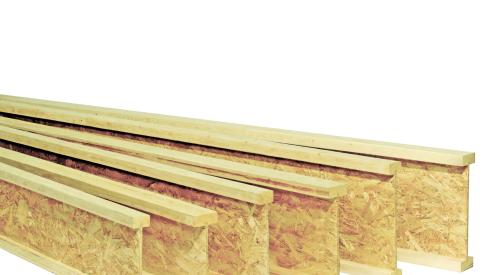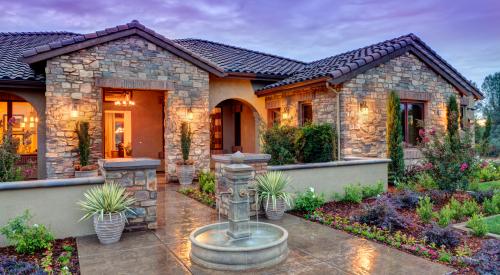The Natural Resources Defense Council (NRDC) is very concerned with halting the destruction of North American forests. That’s their business. And they’re hoping builders will make it part of theirs, too.
So far, the biggest of the big are responding. Pulte, Kaufman & Broad and Habitat for Humanity—numbers one, two and 92, respectively, of Professional Builder’s 2000 Giants listing—have all committed to working with the NRDC to change their wood procurement and framing efficiency habits.
The NRDC is a non-profit, environmental group of 400,000 members that has until now used traditional approaches to try to protect old-growth, or virgin, forests. It occurred to them, however, that litigations against logging operations and political lobbying do not get to the root of the problem. Now, by partnering with major players in home building and do-it-yourself retail, the NRDC is hoping to send a message to timber suppliers that there is "good" wood and "bad" wood, and these consumers of over half the wood fiber used in the United States know the difference (the next largest consumer of wood fiber is the paper and shipping products industry).
"What we want to be able to do is develop programs that will compliment or enhance existing programs," says Sami Yassa, senior scientist with the NRDC. "But these new programs should target what we consider to be the root causes of environmental problems. In the case of forestry, what clearly came to mind was that forest destruction in a given area is driven by what we see as two things: demand for wood and a lack of market incentives—signals from the market to the forest landowner or the timber company to protect places and to manage sustainably."
In an attempt to slow deforestation by getting to the root of the issue, the NRDC has come up with what it calls the "Forest Initiative," a three-point partnership program that they think will be beneficial to both builders’ bottom lines and the nation’s forests.
Builders who sign on to the program must commit to doing three things:
The Program in Action
If it sounds like a staggering task, that’s because it is. It’s also an amazing commitment. But Yassa says it is not something that builders have to do on their own or all at once, and he thinks they will find it’s worth their while when it comes to the bottom line. Pulte, says Yassa, which is currently in the process of implementing efficient building techniques in several of their Western divisions—with the help of the NRDC and the Building Science Consortium, a multi-disciplinary team made up of builders (including Pulte Homes), manufacturers and consultants—is realizing significant savings on each home.
After the negligible costs associated with teaching trades how to do it and re-working plans to incorporate advanced framing, the efficient wood use component of the NRDC’s three-point "Forest Initiative" plan really pays off. Using fewer studs, single top plates, trusses and manufactured panels means lower costs in timber, and often the energy efficiency features of advanced framing means builders can downscale HVAC systems.
But it isn’t just tangible cost savings that the NRDC is marketing to builders. "There are certainly cost savings in the short term if you build efficiently, but there are also long-term benefits in terms of corporate image and other perks of the procurement question, and I think that’s what appeals to the builders I’ve worked with," says Yassa.
Corporate image is a driver indeed, especially in a market so flooded with options for its consumers. And perhaps Pulte’s recent announcement of a new nation-wide branding campaign encapsulates that competitive drive for customers—a set of new television commercials proclaim that Pulte’s goal is "Giving Builders a Good Name."
While Pulte’s Western division is making great strides in the efficient wood use arena, with the help of the NRDC Kaufman & Broad is going full throttle in its attempts to eliminate the use of wood from old-growth forests and phase in certified wood. K&B has retained Arthur Anderson to conduct an in-depth third-party audit of their wood procurement practices and the company has also named an environmental officer, Robert Freed, to oversee the audit.
K&B is examining the entire chain of custody backwards, from the framer to the supplier to the mill, with the end result being that K&B will have a database of all the mills that supply its lumber. From there, auditors can determine which forests the wood comes from—an old-growth forest or a plantation where trees are grown as crops.
That process is long and a bit complicated, most notably because it’s not been done before. "The supply chain is a very complicated, multi-layered thing," says Larry Gotlieb, K&B’s vice president for government and public affairs and associated corporate council. "We all have this concept that Paul Bunyan is out there with an axe, he chops down the tree, somebody (probably Babe) takes it to the mill, the mill cuts it and then the mill just sends it to the construction site and there you are. There are multiple layers and there’s never been a particular reason to track the source of wood. There’s no pedigree that follows the piece of wood."
The NRDC and the Forest Stewardship Council are helping K&B identify sources of pedigreed or certified wood. By FSC standards, each 2x4 of certified lumber must be stamped to assure that it was grown and harvested according to the FSC standards, much like the certification process of organic produce.
"Like other major companies, we’re taking very serious steps towards trying to minimize intrusion on the environment and be respectful of the environment in what we do," says Gotlieb. But the challenge up until now has been entering into dialogue with environmental groups in order to effect change. "There are groups in the environmental community that take a fairly extreme position against any new construction, not withstanding the fact that we have a growing population, so if there is an area of environmental protection that we can work on with responsible environmental groups like the NRDC, we’re going to do it."
By working with such high-profile builders, the NRDC hopes to not only raise awareness of the deforestation problem (according to Yassa about 95% of the virgin old-growth forests in the U.S. have been cut) but also to attract attention to what they consider to be a viable solution.
The group hopes that participating builders will begin to make a significant impact on the problem of dwindling forests and send a signal to forest landowners that the market is moving towards a more environmentally-sensitive trend and they may need to adjust their business practices as well.










